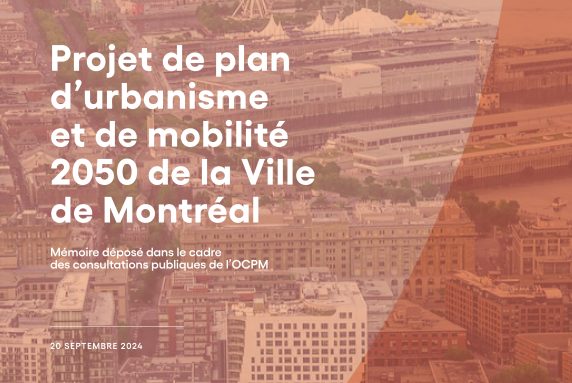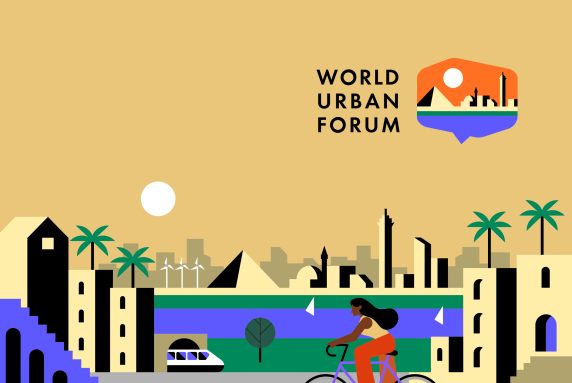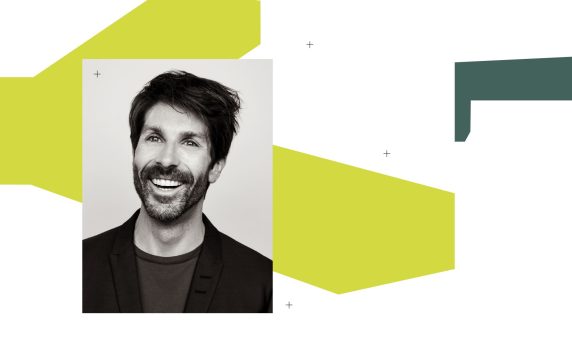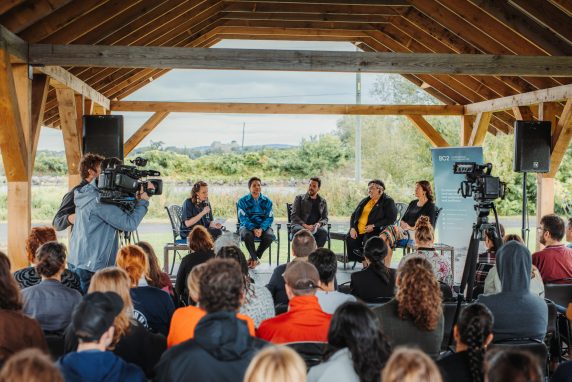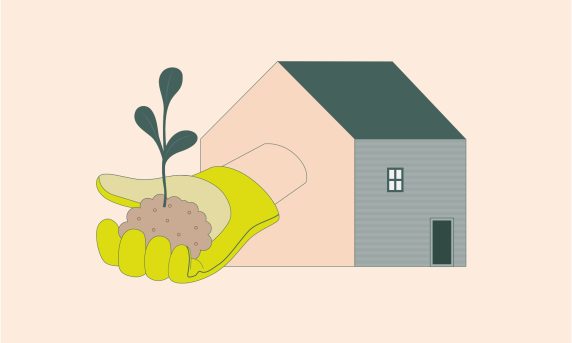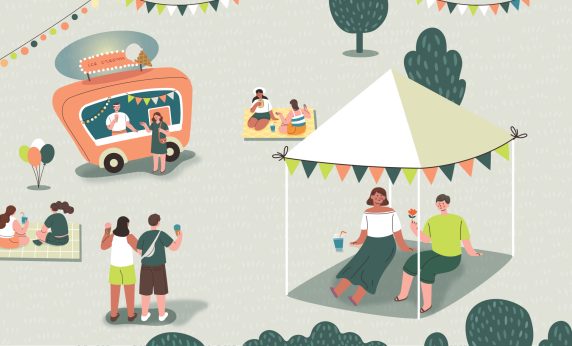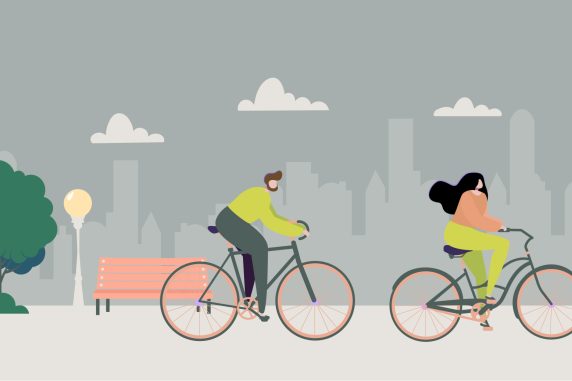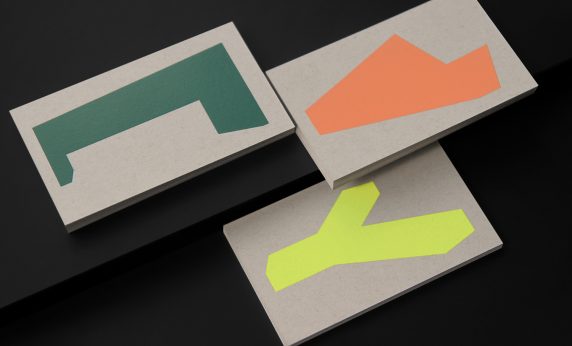Land use planning is transforming our living environments. Our experts dissect the issues raised by current events and share the news and ideas that make us progress together.
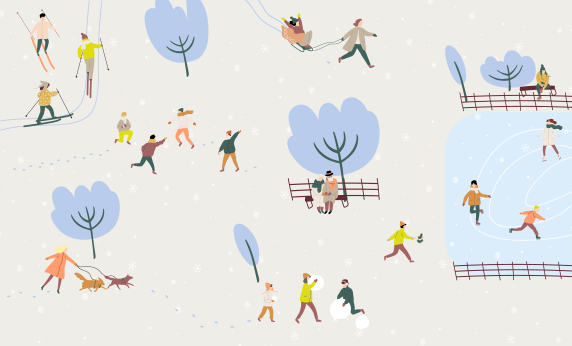
Réflexions BC2
Embracing Winter, Enjoying the Cold
Chapters
Introduction
“Le jeu de l’hiver,” a short film directed by Bernard Gosselin and Jean Dansereau in 1961, begins with several short sequences illustrating the theater of winter. White flakes cover a colorless film. The sound of the wind dominates the first scene, followed by the more violent noise of a snowblower running out of steam. In the distance, an engine roars, tires spin, but the car doesn’t move. Elsewhere, young men in uniform struggle against the cold of the night, following the tracks left by a car to avoid a snow-covered sidewalk. Elsewhere still, a young woman walks alone and slowly, doing her best not to slip. The melody of a cold winter is suddenly replaced by the warmer sound of a vibraphone. The rapid rhythm accelerates with the strum of a guitar. The music evokes travel, life, sunshine. Scenes become festive. Sliding games without sleds or magic carpets, children play covered in snow and despite the winds. The street pavement is transformed into a hockey game, interrupted only for a few seconds by a passing car that apologizes before passing through. Small hills become ski slopes. True to its title, the film culminates in a montage that captures the enchantment of this frosty season, weaving a tapestry of winter’s charm and its harsh embrace, where sidewalks lie dormant under January’s icy mantle, and days are softly dimmed as the clock strikes a quarter past four.
Winter as an Opportunity
Nordicity, a concept developed by Quebec geographer Louis-Edmond Hamelin in the 1960s, encompasses the characteristics of regions related to cold, snow and short winter days. As discussed in the first publication from this series on Nordicity, this concept reflects the adaptation of human societies to northern conditions. It embodies the evolution of our relationship with space over the seasons to address how northern climatic conditions impact our social, spatial, economic and cultural conditions.
This publication focuses on practical spatial practices that can contribute to our territorial resilience by taking advantage of northern conditions. Thus, it presents examples of interventions made possible by cold, snow and darkness, to offer new reflections on resilient territorial planning in the Anthropocene.
Matrix for a Resilient Spatial Practice
To identify the most effective strategies for a spatial practice anchored on the notion of resilience, we propose two analytical indicators:
Territorial resilience
Territorial resilience delves into the way in which a geographic territory will behave when faced with disruption. The territorial resilience of a place can thus be multifaceted as a place may be well equipped to respond to environmental changes, but poorly equipped to adapt to any other dimensions (economic crisis, demographic growth, etc.). In the framework of this work, we propose to close-in on three dimensions of territorial resilience: climate resilience, seasonal resilience (the spatial strategy’s relevance across seasons and efforts needed to respond to seasonal cycles), and social resilience (the spatial strategy’s contribution to social equity).
Scalability
Scalable spatial strategies possess the flexibility to be adapted from one territorial context to another. In evaluating the effectiveness of these strategies, it is essential to consider their scalability and adaptability. A key factor in determining this is whether a strategy, initially applied in a specific context, can be implemented in a different territorial setting. This adaptability extends to financial considerations as well. Strategies that rely heavily on unique or specific circumstances may be less impactful, as their limited scalability makes them more challenging to apply broadly. Thus, the potential for a strategy to be adapted and scaled across various contexts – from villages to major cities — is a vital aspect of its potential contribution to a practical framework for resilient spatial practices in northern territories.
Winter Strategies
Winter Nordic territories are synonymous with cold temperatures, short days, frost, and landscapes flattened in color by snow.
These characteristics are at the heart of the promotion strategies of northern cities that claim their white winter as a pillar of their identity. In this context, several examples of spatial strategies that turn the Nordic character of a place into a strength to be valued are highlighted.
These examples of strategies are grouped into four categories.
1- Light
In the urbanized areas of southern Canada, the sun rises around 7:30 a.m. and disappears behind the horizon around 4 PM during the winter solstice. In Sept-Îles, the sun sets some thirty minutes earlier still. And so, the night comes hand in hand with winter. This condition presents unique opportunities that only emerge in the absence of daylight. For example, lighting plans, outdoor multimedia projections and certain types of visual arts can be deployed even before the end of the workday.
Lighting plans
Lights illuminate the unique aspects of the cityscape, casting a new perspective by revealing specific features of the landscape. In this regard, lighting plans are a tool favored by many northern cities to stage the urban landscape and its various architectural components. These plans subtly guide pedestrians, often without their awareness, fostering a rediscovery of the neighborhood as residents or visitors explore on foot.

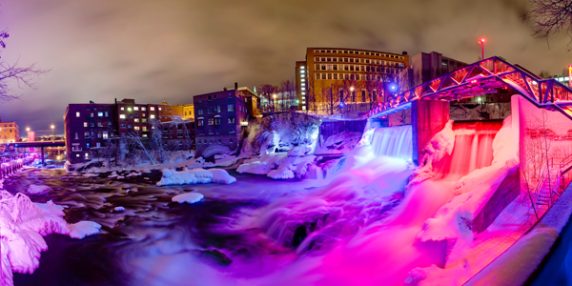
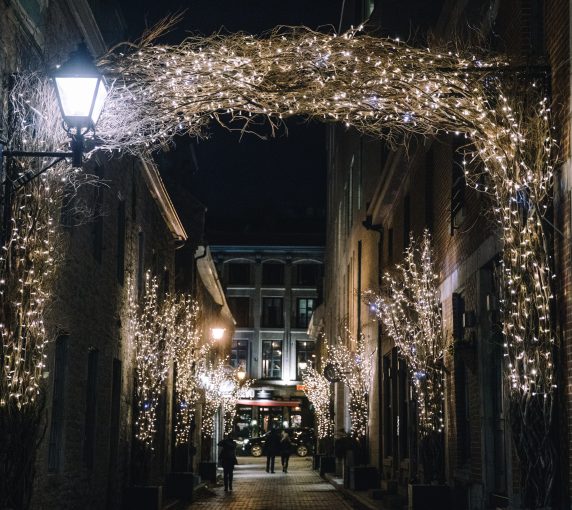
Multimedia projections
Projected onto the blind walls of buildings, architectural facades or even the crowns of trees, multimedia projections are becoming increasingly popular and accessible in northern cities. In Montreal, the artistic installation Cité Mémoire is a journey of images, words and music depicting, in over twenty tableaux, characters who have marked the city. The project begins in Old Montreal and the Old Port, then extends downtown, to the Latin Quarter, in Pointe-aux-Trembles, and some 350 kilometers further afield in Charlevoix. Projections start 30 minutes after sunset, from 9:10 PM at the height of summer to 4:30 PM at the peak of winter. Starting up to five hours earlier in winter, these projections find a new audience as the seasons progress
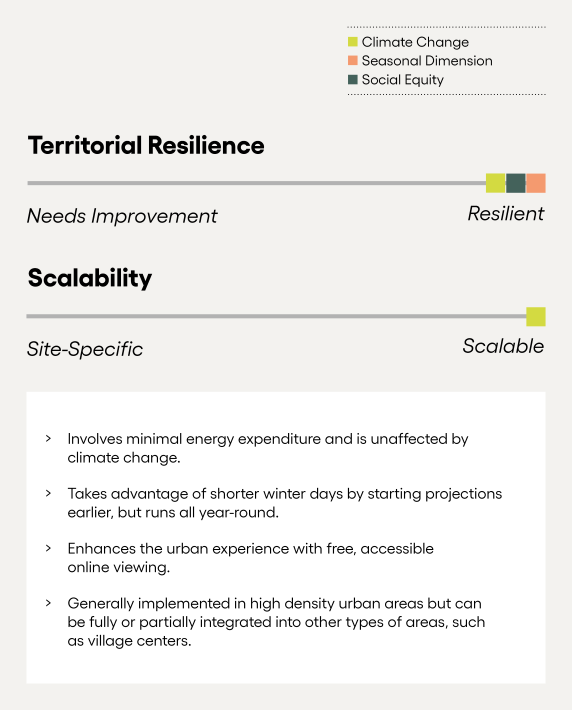
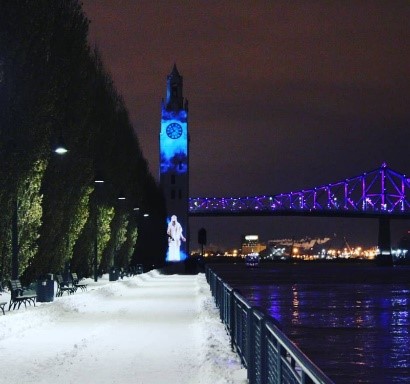
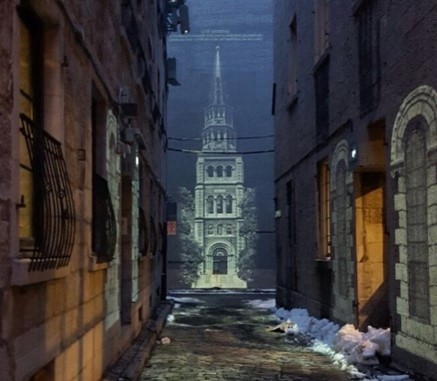
Public art
Art can illuminate cities and winter villages. That’s what the Luminothérapie festival in Montreal’s Quartier des Spectacles is all about, with its series of colorful, illuminated works that delight visitors through the poetic universe of art. Elsewhere, ice sculptures from 13 Canadian teams are showcased at the National Ice Sculpture Championship of the Winterlude Ball in Ottawa that welcomes around 1.6 million visitors each year.



2- Motion
Several winter urban planning practices propose interventions that get the body moving. Physical movement warms the body without any cost or carbon emissions.
Ice trails
Rural communities can make the most of their wide-open spaces to create unique ways to discover the natural winter landscape on skates. In the Eastern Townships and Mauricie, networks of icy trails several kilometers long combine skating with the calm of the forest.
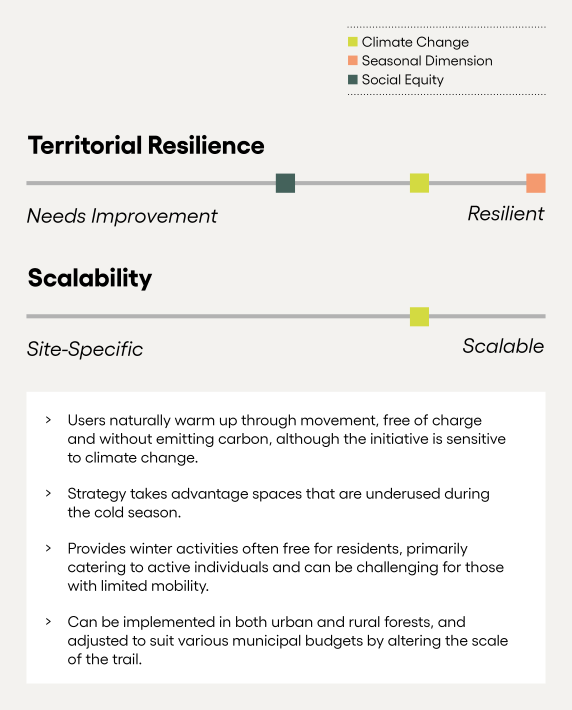
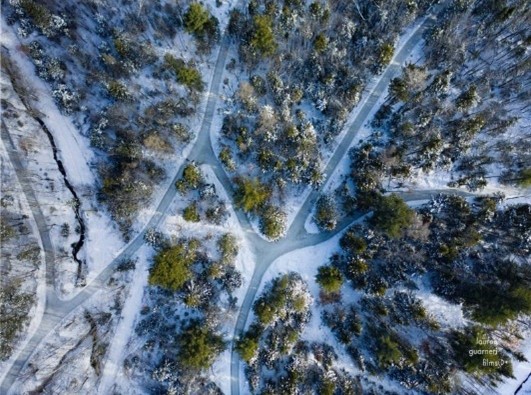

The transformation of space into sports grounds
Several initiatives have emerged to reclaim snowy spaces that otherwise would not become usable until after the ice melts. For example, a public golf course can be arranged to accommodate hiking, snowshoeing, or cross-country skiing. When the topography allows, a hill can be transformed into an urban alpine ski center, as demonstrated by a recent initiative in Toronto, reminiscent of Mont-Royal in the 1970s. Outdoor curling is another emblematic winter sport of northern cities, which often take place on frozen lakes, lochs or in parks or backyards.
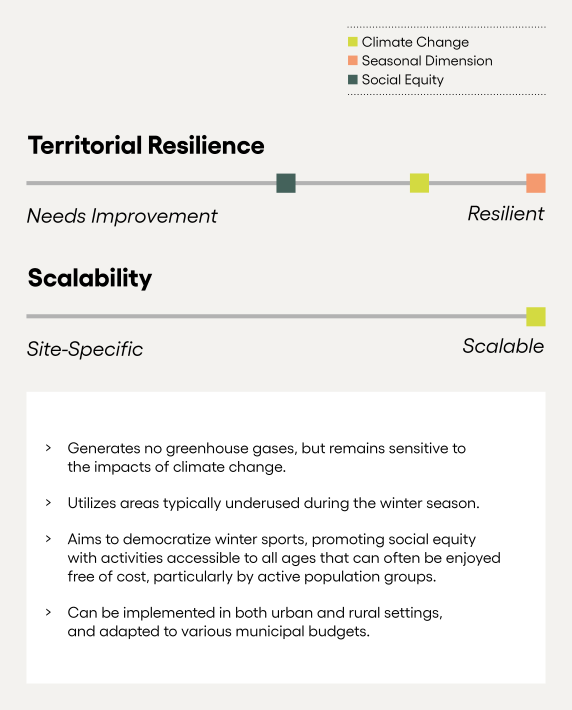


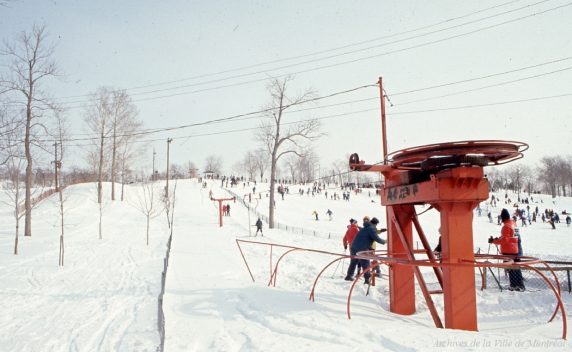
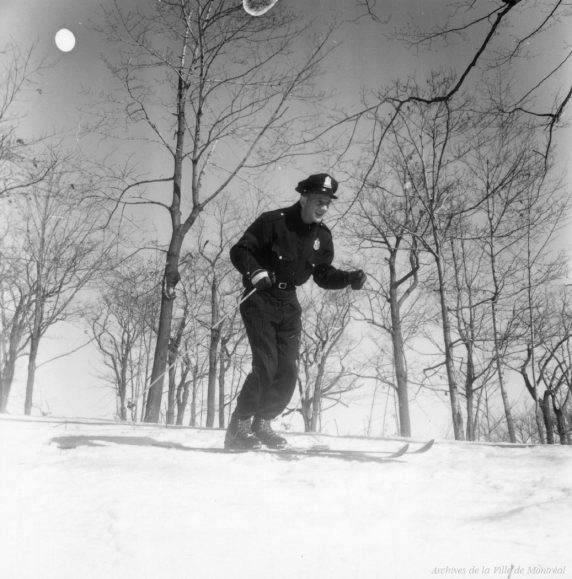
From book loans to toboggan loans
To lend a hand (or a mitten) to those new to winter sports, some libraries in northern cities have opted to loan out snowshoes, sleds, crampons, and even walking sticks. In Montreal, four municipal libraries offer the equipment behind the service counter, while in Toronto, it’s the library that moves to lend its equipment on-site, thereby facilitating access to winter sports one step further. This initiative makes it easier to practice outdoor activities in winter, especially for newcomers who may be experiencing snow for the very first time, and for residents who cannot afford to buy all the necessary equipment.
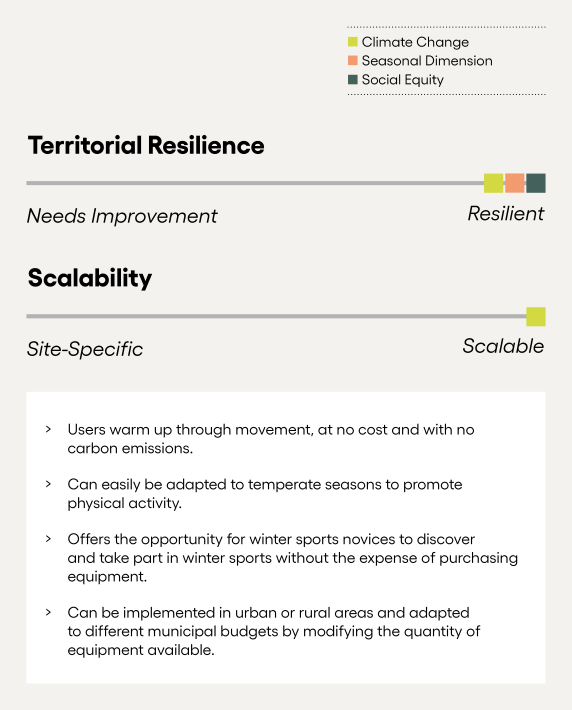


“Best friends” parks
In cold weather, parks typically see a decrease in their role as venues for spontaneous gatherings. Dog parks, however, remain active as unique public spaces where dogs can freely wander and play. These parks draw dedicated owners, who often brave the chilly winter conditions to provide their four-legged companions with these moments of freedom. While the dogs stay warm through play, their owners, usually standing still, chat among themselves, exposed to the winter elements. These parks thus stand out as one of the few outdoor spaces that retain their social function throughout the year, encouraging outdoor socializing and spontaneous encounters between strangers, even in winter.
To enhance social interactions among both dogs and their owners, incorporating artistically designed, functional urban furniture becomes an interesting solution. Such furniture could include structures that offer shelter from inclement weather without relying on active heating. This approach would not only make visits to dog parks more comfortable during longer stays but also beautify these spaces year-round.
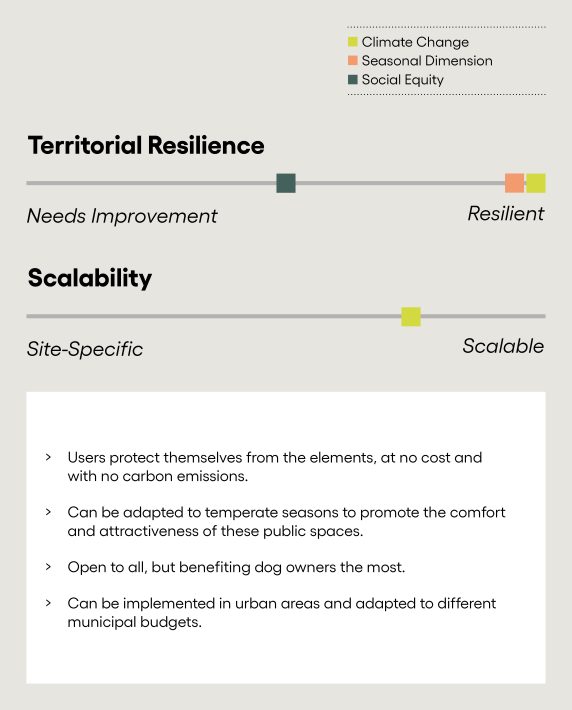

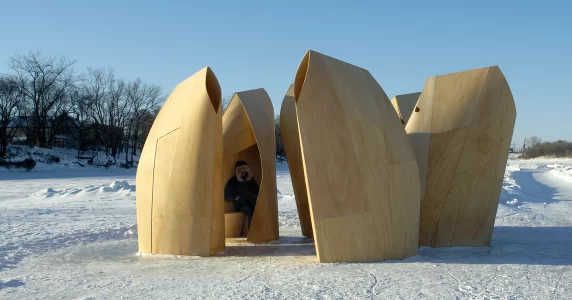
3- Programming
Winter festivals, winter villages, and Christmas markets are cornerstones of cultural life in Canadian northern cities. They infuse a distinctive vibrancy by providing a diverse array of activities for all ages and transforming spaces into warm, welcoming centers of community exchange. These events attract visitors from various backgrounds, thereby enriching the local community and invigorating the local economy. In the rich tapestry of northern city histories, these celebrations stand out as jubilant chapters, epitomizing the spirit of winter and the essence of local culture.
Ephemeral villages
With the arrival of winter, lakes freeze over and ice fishing villages spring up. These become a canvas for showcasing creativity through unique cabin designs and fishing skills. Beyond their cultural significance, these villages also serve as catalysts for economic development in smaller municipalities, while fostering human connections between residents and visitors.
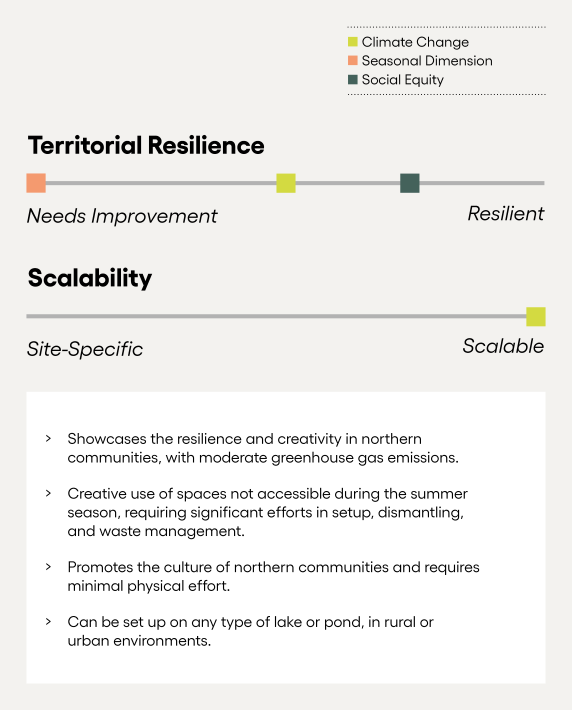

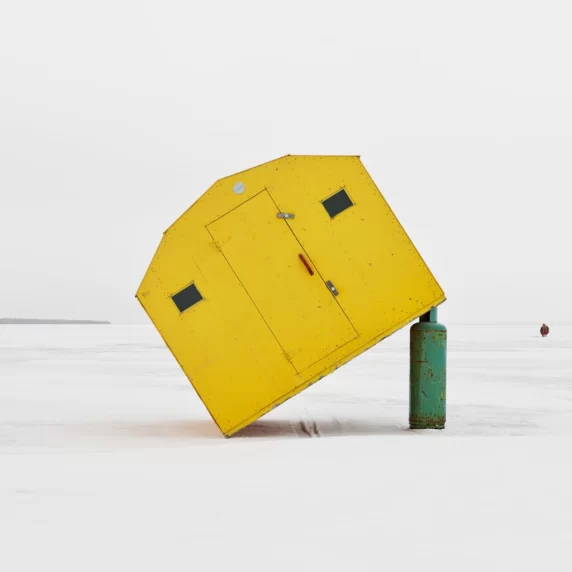
Winter festivals
Winter festivals offer an opportunity for cities to showcase their cultural identity and heritage. They also serve as a gathering point for both locals and visitors, creating a festive and warm atmosphere. From metropolitan areas to mountain villages, these festivals are as diverse as the northern imagination. Electronic music enthusiasts meet at Montreal’s Igloofest or Trois-Rivières’ ArtikFest, while light illuminates sculptures at the Saint-Côme en glace festival and the Carnaval de Québec.
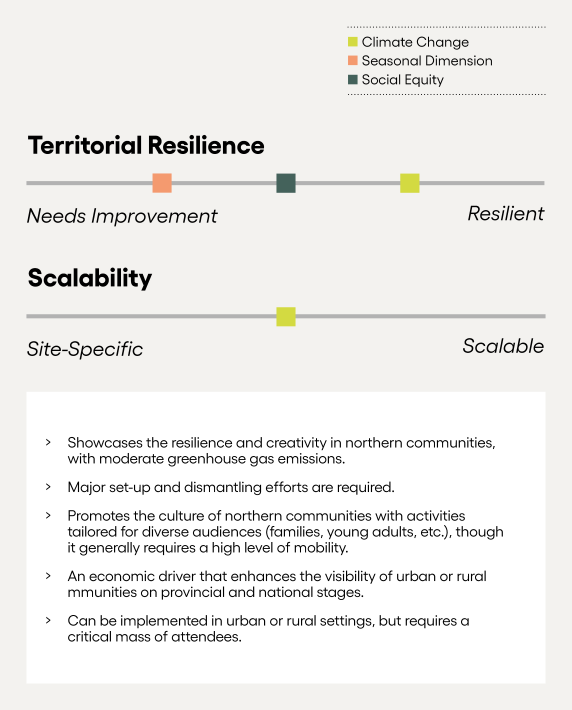
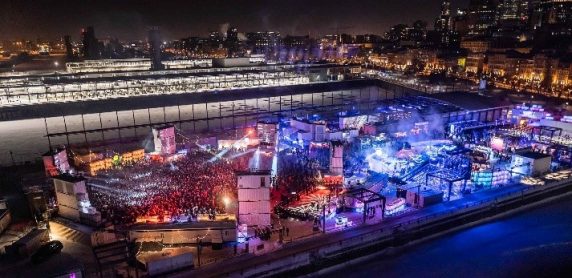
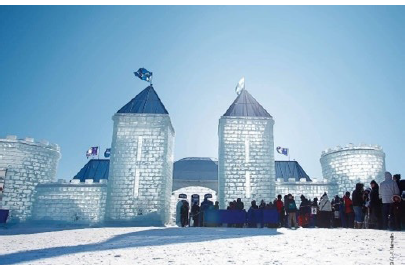
4- Informal Action
As winter transforms cities into veritable playgrounds, informal forms of public space appropriation emerge. Driven by citizen initiative, these informal practices bring people together, inspire, and make use of sometimes overlooked interstitial spaces during the cold seasons.
The white alley
In some cases, the strategies require an exceptional absence of municipal intervention, like snow removal and the spreading of salt, sand, or gravel to prevent slips and falls. For example, a debate in 2013 led the City Council of the Borough of Villeray-Saint-Michel-Parc-Extension to support the reappropriation of alleyways into play areas by stopping street cleaning operations in these urban during winter. This initiative helped to support the informal appropriation of alleyways that residents collectively transform into skating rings or ice lounges.
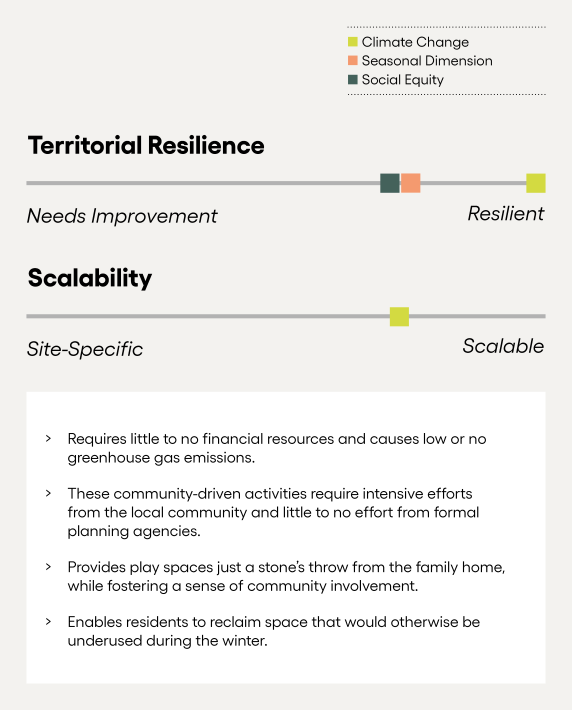
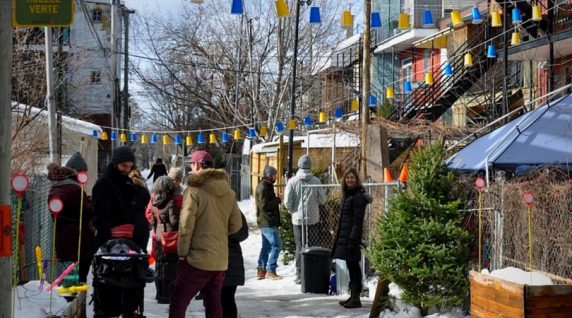
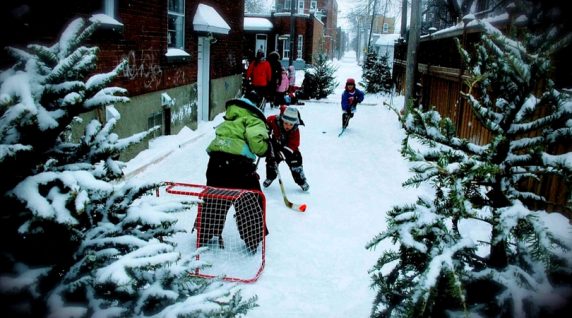
The snow hill
Snow removal operations can help create play spaces by shaping snow hills, which quickly become popular with children. For the older crowd, what are grassy slopes in summer can turn into perfect spots for two-person sledding, saucer rides, or sliding on snow mats.
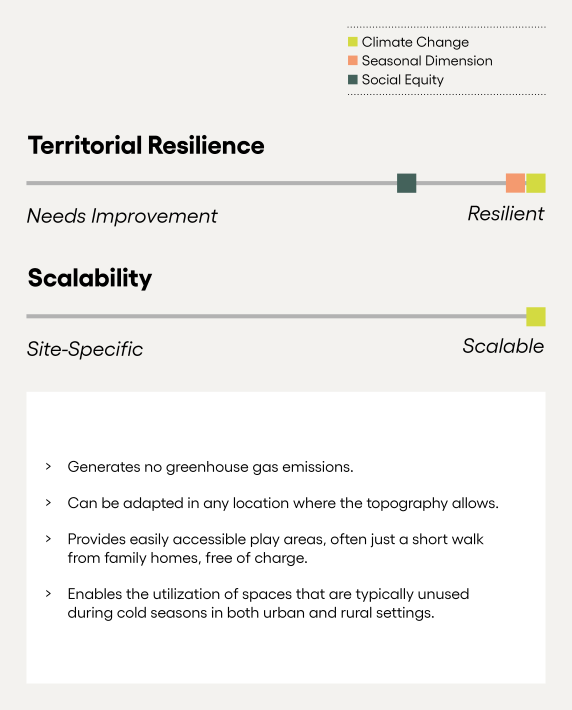
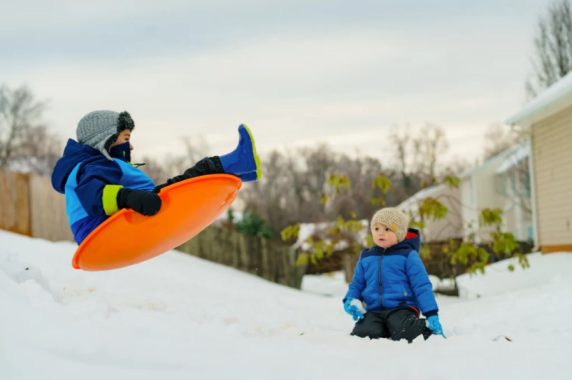
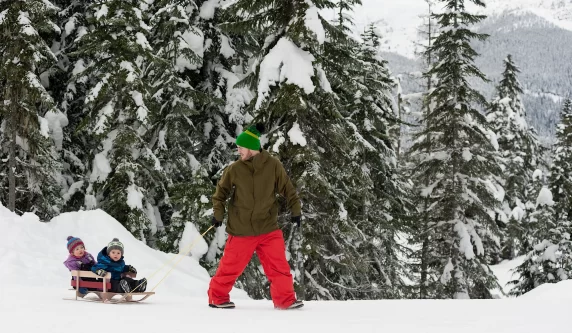
The tennis court skating rink
A bit of water and a lot of patience – that’s all it takes to repurpose a tennis court into something entirely new for the winter. With their high fences acting as boards, flat surfaces, and strategic locations throughout the area, these courts are perfectly suited to host outdoor hockey rinks. As the ice may damage the surface of the court, special treatments may be beneficial to keep the court in great condition year after year.
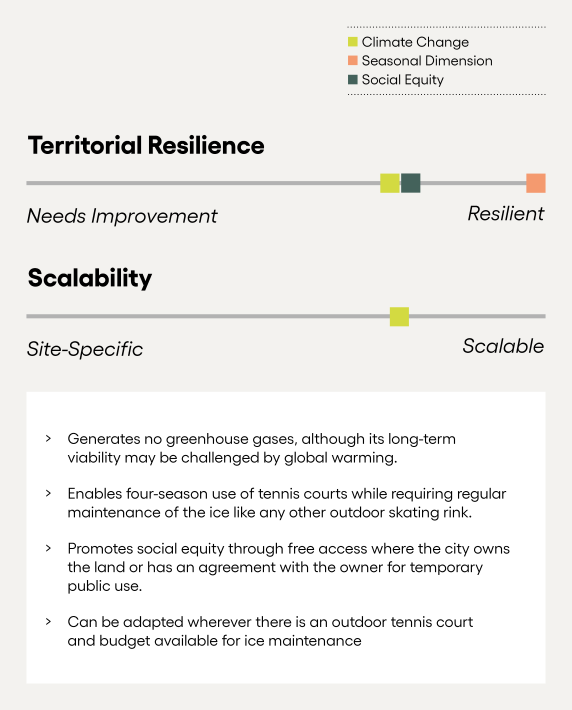
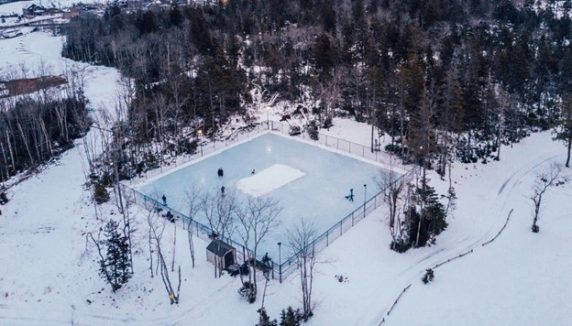

Winter As A Playground For Resilient Urbanism
In conclusion, the innovative winter strategies employed by northern cities demonstrate a remarkable blend of resilience, creativity, and adaptability. These strategies not only address the challenges posed by cold climates and climate change but also enrich the cultural fabric and social dynamics of northern regions. By transforming winter’s limitations into opportunities for community engagement, social equity, environmental sustainability, and economic development, these urban strategies set compelling examples of how to embrace and leverage the unique characteristics of northern cities or villages.


